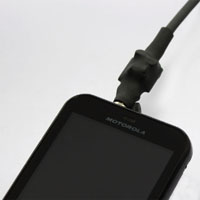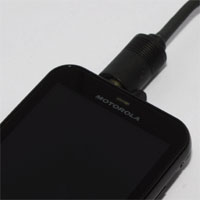At the time beeing your smartphone/tablet in conjunction with DSLR Remote can act either as an infrared remote control or a cable release to your digital reflex camera. A variety of wired remote control is to increase the range by a Bluetooth stereo headset. Wich option is available to you depends for one thing on your camera, i.e. wether it has an built-in infrared receiver and/or an input socket for a shutter release cable.
The second important point is the maximum volume at the ear phone plug of your smartphone/tablet. A few smartphone/tablet types are not able to drive infrared LEDs properly. With these smartphones the passive IR hardware and an opto-coupler based cable propably won't work. The active IR hardware and all transistor based cable layouts will very likely work with all smartphones/tablets. Here you can find a list of smartphones for which the proper operation or the failure of such has been reported.
Cable Layout Variants
Since version 1.5 there are two different cable layout variants, each having different control signals with respect to DSLR Remote. This was neccessary due to the fact that with the "old" cable variant A (= Antiparallel channel layout) some smartphones/tablets show an incorrect behaviour of the focus channel. In some cases, the shutter is released, too, and in some cases, it doesn't do anything at all. For this reason the "new" cable variant S (= Symmetrical channel layout) was developed. It is recommended to choose this variant for use with DSLR Remote, to ensure the whole range of functionality.
If you feel unable to build a cable variant by yourself, you can use the "Version 2" of the Triggertrap Mobile Dongle in conjunction with DSLR Remote.
Layouts
You will find further information about the layout of the needed hardware and detailed how-tos on the following pages:
Infrared |
|||
passive |
aktive |
||
 |
 |
||
Cable |
||
Variant S (Transistors) |
||
 |
||
Variant A (Opto-Coupler) |
Variant A (Transistors) |
|
 |
 |
|



